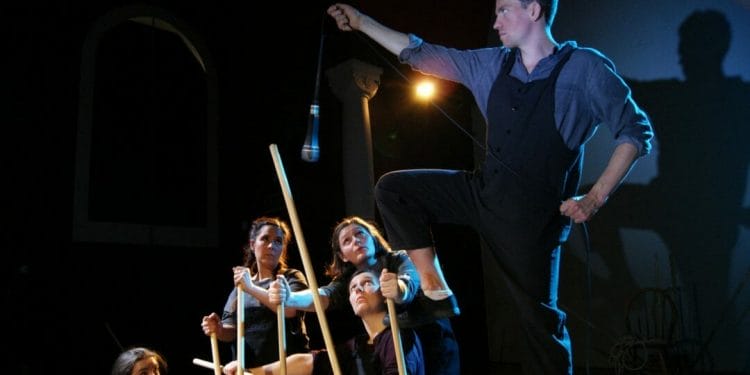The documentary series ‘Making a Murderer’ has sparked a resurgence in the popularity of true crime thrillers. Even theatre company, Pregnant Fish, admit that the real life ‘whodunnits’ stacked up in their Netflix recommended list were the inspiration for Who Put Bella In The Wych Elm? now playing at The Space.
Written and adapted by Leah Francis and Tom Drayton, it is an interesting concept, transferring the documentary style, more commonly seen in films and TV shows, to the stage. The company have obviously done a great deal of meticulous research to piece together the different clues and pull together the bigger picture.
It’s made very clear from the outset that they aren’t telling us the story, but instead presenting us with the evidence. The only problem is, all this evidence ends up being a little overwhelming when you’re seeing it for the first time. The sources, from coroner and police reports, to newspaper clippings and letters, are projected on to the back wall, and I soon had to make the choice of reading the source or paying close attention to what was being said, I couldn’t manage both.
I went with listening to what was being said, and it was very interesting, I had never heard of this unsolved murder before, and was immediately intrigued. The details spanned out beyond ‘Bella’ and on to other characters who may or may not have been involved. The difficulty in relying solely on evidence, is that it has to be presented in a way that keeps the audience gripped. A couple of methods used here work, including the physicality and hand movements, but the repeated use of multiple characters speaking at once was extremely difficult to follow, especially when they were quoting different sources.
It wasn’t just the audience who struggled with the onslaught of information, a few of the cast had difficulty getting their lines across, and it was really only Patrick McHugh who attempted to give any of his characters some life.
The staging works well, with cardboard archive boxes representing the case files being used to house a number of props. Wooden doweling are used effectively to represent the tree branches and to create different spaces, while suitably suspenseful music and lighting help set the overall tone.
There’s definite potential in the concept of a staged documentary, and the detailed research in Who Put Bella in the Wych Elm? means that it’s compelling enough to keep the audience’s attention, although aspects of the presentation need some work to help guide the audience through this complex case.
















